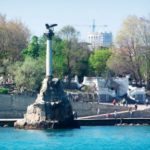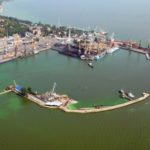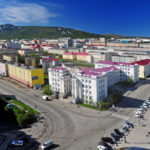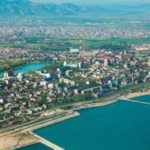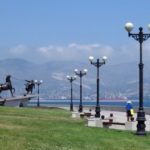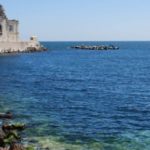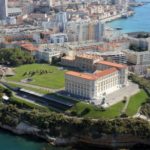Interesting facts about Sevastopol
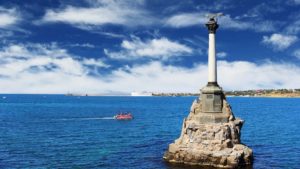 Sevastopol is a city that from time immemorial served as a seaport. Its importance in this role can not be overestimated to this day, because in fact it is the largest “gateway” to the Black Sea, and the local port is capable of serving a huge number of various ships in a short time.
Sevastopol is a city that from time immemorial served as a seaport. Its importance in this role can not be overestimated to this day, because in fact it is the largest “gateway” to the Black Sea, and the local port is capable of serving a huge number of various ships in a short time.
Sevastopol is the main port of the Black Sea Fleet of Russia.
The coast of Sevastopol is unique for the Crimean peninsula due to the presence of three dozen comfortable bays that never freeze. This feature made the city an important military outpost and center of trade.
Sebastopol Bay, on all sides sheltered by high rocky shores, goes deep into the land more than 8 kilometers. It is considered one of the most convenient bays in the world.
Sevastopol is the sunniest city in the Crimea, there are about 98 cloudless days a year. Yalta and Alushta, albeit slightly, but inferior to him on this indicator.
Prince Vladimir took Orthodoxy in the territory of modern Sevastopol – then this place was the Greek fortress of Chersonese.
The modern Sevastopol was founded in 1783 by a Russian Rear Admiral of Scottish descent. The first fortifications on this site were erected 5 years earlier on the instructions of Suvorov.
The name “Sevastopol” in Latin means “the imperial city”.
Victor Hugo compared the siege of Sevastopol during the Crimean War, which lasted 10 months, with the capture of Troy. In fact, the allies did not manage to seize the fortress – they got in only after the withdrawal of Russian troops, and saw only a pile of debris.
During the Second World War Sevastopol and its inhabitants once again demonstrated their heroism, defending the city from the Germans for 250 days. Soviet troops left the fortifications of Sevastopol, only completely exhausting the opportunity to defend themselves. After this war, the city once again remained alone ruins.
Sevastopol was one of the first cities of the Russian Empire, where they laid the tram line. However, the tram turned out to be an inappropriate transport for this locality due to differences in heights, and after the war the line was completely dismantled.
Sevastopol annually visits more than 1000 ships.
One of the central streets of Paris is called the Sevastopol Boulevard.
In the 19th century, there were three oyster breeding enterprises in Sevastopol. Local shellfish was also served at the table of the royal family, who considered these oysters as the best in the world. To deliver mollusks from Sevastopol to the capital was built a special refrigerator car, at that time had no analogues throughout the empire.
In the 19th century, on the site of the Monument to the Scuttled Ships in Sevastopol, the “Poplavok” restaurant was floating above the waves. It was built right above the oyster jar – the shellfish was taken from the pool in the center of the room and immediately served to the table.
At the end of the 19th century, pigeon mail was organized in Sevastopol, where 250 birds and 4 people were “servants”.
Because of the features of the relief in Sevastopol, the mass of stairs replacing the streets – more than 80 pieces.
In Sevastopol, the way to the ships is illuminated by the highest lighthouse in the post-Soviet space, the top of which is separated from the sea by 186 meters.
At the end of the 19th century, in Sevastopol, for the first time in history, it was possible to link warships with radio.
In the 1930s, the first wind power station on the planet was built in Sevastopol.
